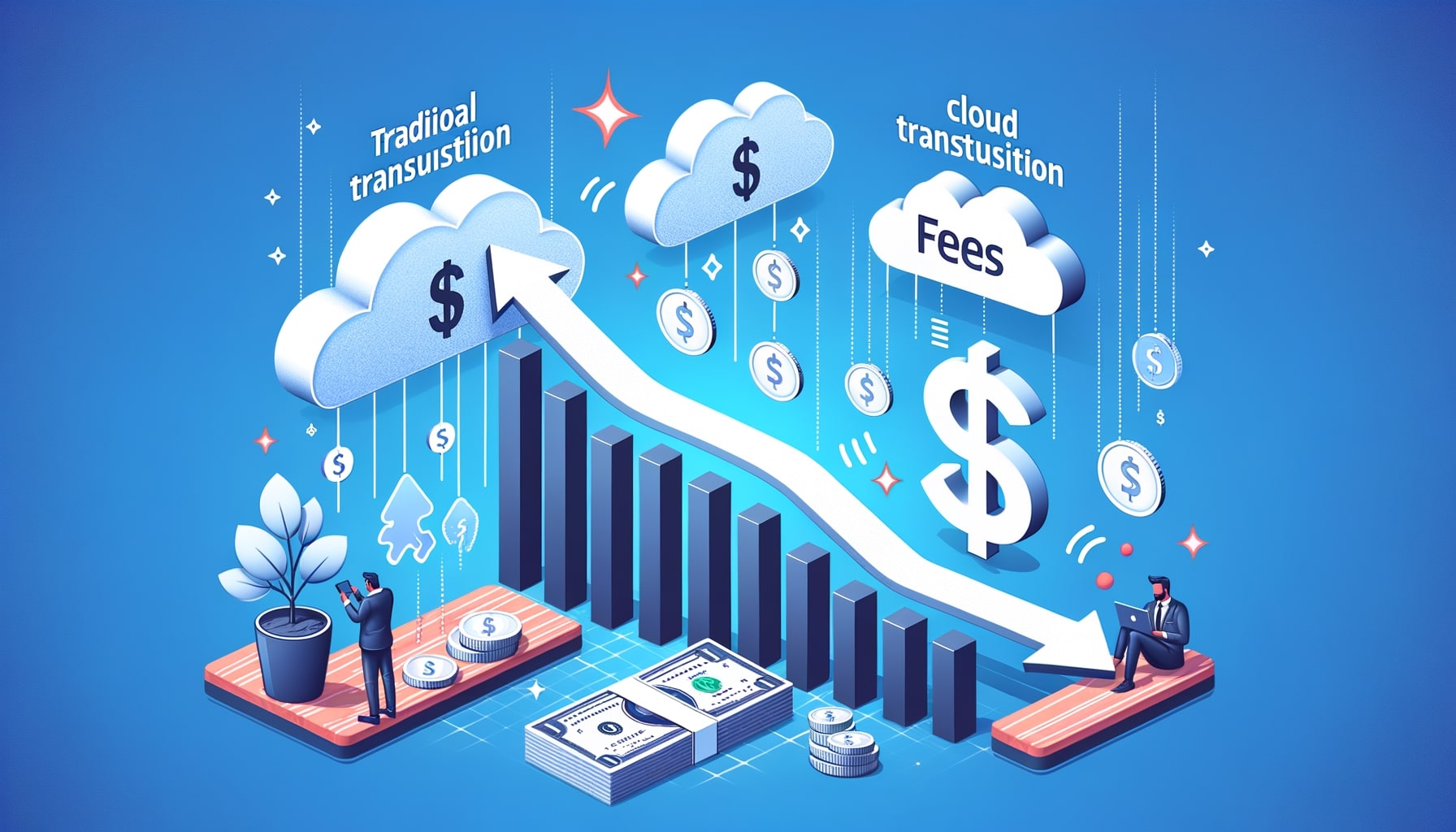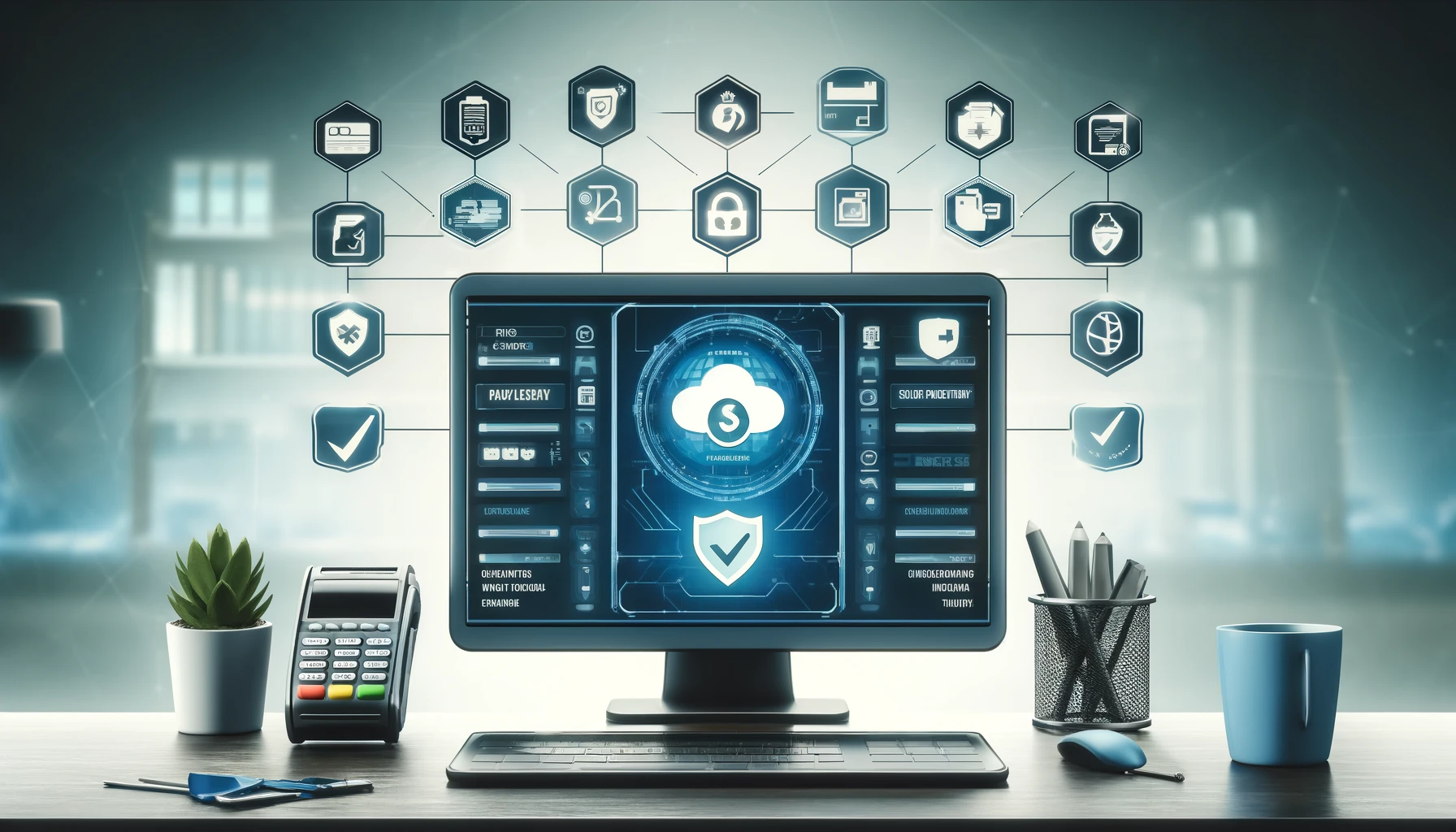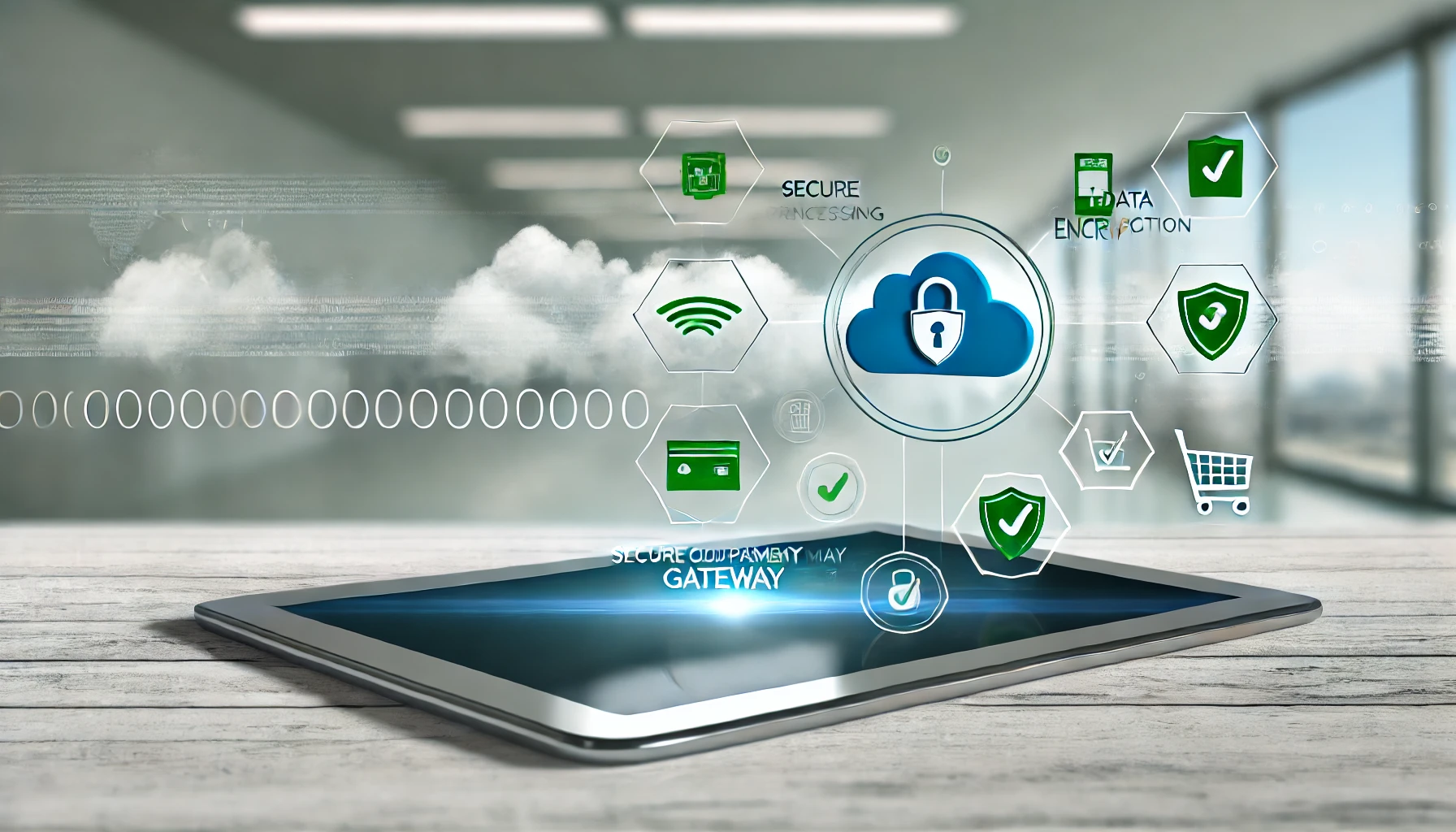How to Secure Your Cloud Payment Data
In today’s digital age, the use of cloud technology has become increasingly prevalent in various industries, including the payment processing sector. Cloud payment data refers to the sensitive information related to financial transactions that is stored, processed, and transmitted through cloud-based systems. This includes credit card numbers, bank account details, and personal identification information. As more businesses adopt cloud-based payment solutions, it becomes crucial to prioritize the security of this data.
The Risks and Challenges of Cloud Payment Data Security
Securing cloud payment data poses several challenges and risks that businesses must address to protect their customers and maintain their reputation. One of the primary concerns is the risk of data breaches. Cybercriminals are constantly evolving their tactics to exploit vulnerabilities in cloud systems and gain unauthorized access to sensitive information. A single breach can result in significant financial losses, legal consequences, and reputational damage.
Another challenge is the complexity of cloud environments. Cloud-based payment systems often involve multiple layers of infrastructure, software, and service providers. Each component introduces potential vulnerabilities that can be exploited by attackers. Additionally, the dynamic nature of cloud environments makes it challenging to maintain consistent security controls and monitor for potential threats.
Best Practices for Securing Cloud Payment Data
To mitigate the risks associated with cloud payment data security, businesses should implement a comprehensive set of best practices. These practices include:
- Conducting a thorough risk assessment: Before adopting cloud payment solutions, businesses should assess the potential risks and vulnerabilities specific to their operations. This assessment should consider factors such as data sensitivity, regulatory requirements, and the security capabilities of cloud service providers.
- Implementing strong access controls: Access to cloud payment data should be restricted to authorized individuals only. This can be achieved through the use of strong authentication measures, such as multi-factor authentication and biometric verification. Additionally, businesses should regularly review and update user access privileges to ensure that only necessary permissions are granted.
- Regularly updating and patching systems: Cloud service providers often release updates and patches to address security vulnerabilities. Businesses should stay up to date with these releases and promptly apply them to their systems. Regular vulnerability scanning and penetration testing can also help identify and address potential weaknesses.
- Encrypting cloud payment data: Encryption is a critical component of data protection. By encrypting cloud payment data, businesses can ensure its confidentiality and integrity, even if it is intercepted by unauthorized individuals. Strong encryption algorithms and key management practices should be employed to safeguard the data.
- Implementing network and infrastructure protection measures: Cloud payment data is transmitted over networks and stored in infrastructure components. To secure this data, businesses should implement robust network security measures, such as firewalls, intrusion detection systems, and secure network protocols. Additionally, regular monitoring and logging of network activities can help detect and respond to potential threats.
- Complying with regulatory requirements: Depending on the industry and geographical location, businesses may be subject to various regulatory frameworks governing the security of payment data. It is essential to understand and comply with these requirements to avoid legal consequences and maintain customer trust.
Implementing Strong Authentication Measures for Cloud Payment Data
Authentication is a critical aspect of securing cloud payment data. Strong authentication measures ensure that only authorized individuals can access sensitive information. There are several methods businesses can employ to enhance authentication:
- Multi-factor authentication (MFA): MFA requires users to provide multiple forms of identification, such as a password, a fingerprint scan, or a one-time passcode sent to their mobile device. This adds an extra layer of security, as even if one factor is compromised, the attacker would still need to bypass the other factors.
- Biometric authentication: Biometric authentication uses unique physical or behavioral characteristics, such as fingerprints, facial recognition, or voice patterns, to verify a user’s identity. Biometrics are difficult to replicate, making them a robust authentication method.
- Token-based authentication: Token-based authentication involves the use of physical or virtual tokens that generate one-time passcodes. These passcodes are used in conjunction with a password to authenticate the user. Tokens can be hardware devices or mobile applications.
- Single sign-on (SSO): SSO allows users to access multiple cloud-based systems with a single set of credentials. This simplifies the authentication process and reduces the risk of weak or reused passwords. SSO can be combined with MFA for enhanced security.
Encrypting Cloud Payment Data: Ensuring Confidentiality and Integrity
Encryption is a fundamental technique for protecting cloud payment data. It involves converting the data into an unreadable format using encryption algorithms and keys. Encryption ensures the confidentiality and integrity of the data, even if it is intercepted by unauthorized individuals.
There are two primary types of encryption: symmetric and asymmetric encryption. Symmetric encryption uses a single key to both encrypt and decrypt the data. Asymmetric encryption, on the other hand, uses a pair of keys: a public key for encryption and a private key for decryption.
To ensure the security of cloud payment data, businesses should employ strong encryption algorithms, such as Advanced Encryption Standard (AES) or RSA. Additionally, key management practices are crucial to protect the encryption keys. Keys should be stored securely, regularly rotated, and only accessible to authorized individuals.
Securing Cloud Payment Data through Network and Infrastructure Protection
Securing the network and infrastructure components involved in cloud payment processing is essential to protect the data from unauthorized access and potential attacks. Businesses should implement the following measures:
- Firewalls: Firewalls act as a barrier between the internal network and external networks, filtering incoming and outgoing traffic based on predefined rules. They help prevent unauthorized access and protect against common network-based attacks.
- Intrusion Detection and Prevention Systems (IDPS): IDPS monitor network traffic for suspicious activities and potential security breaches. They can detect and respond to various types of attacks, such as malware infections, unauthorized access attempts, and data exfiltration.
- Secure network protocols: Cloud payment data should be transmitted over secure network protocols, such as Transport Layer Security (TLS) or Secure Shell (SSH). These protocols encrypt the data during transmission, preventing eavesdropping and tampering.
- Regular monitoring and logging: Businesses should implement robust monitoring and logging mechanisms to track network activities and detect potential threats. This includes monitoring network traffic, system logs, and user activities. Anomalies and suspicious behavior should be promptly investigated and addressed.
Compliance and Regulatory Considerations for Cloud Payment Data Security
Compliance with regulatory requirements is crucial for businesses handling cloud payment data. Failure to comply with these requirements can result in legal consequences, financial penalties, and reputational damage. Some of the key compliance and regulatory considerations include:
- Payment Card Industry Data Security Standard (PCI DSS): PCI DSS is a set of security standards established by major credit card companies to protect cardholder data. Businesses that handle credit card information must comply with these standards, which include requirements for network security, encryption, access controls, and regular security assessments.
- General Data Protection Regulation (GDPR): GDPR is a European Union regulation that governs the protection of personal data. It applies to businesses that process the personal data of EU residents, regardless of their location. GDPR requires businesses to implement appropriate security measures to protect personal data and obtain explicit consent for its processing.
- Data localization requirements: Some countries have specific regulations that require businesses to store and process payment data within their borders. These requirements aim to ensure data sovereignty and protect sensitive information from being accessed by foreign entities.
- Industry-specific regulations: Depending on the industry, businesses may be subject to additional regulations governing the security of payment data. For example, healthcare organizations must comply with the Health Insurance Portability and Accountability Act (HIPAA), which includes requirements for the protection of patient payment information.
Monitoring and Detecting Anomalies in Cloud Payment Data
Monitoring and detecting anomalies in cloud payment data is crucial for identifying potential security breaches and mitigating their impact. Businesses should implement the following practices:
- Log management and analysis: Logs generated by various systems and applications should be collected and analyzed to identify suspicious activities. This includes monitoring login attempts, access to sensitive data, and changes to system configurations. Automated log analysis tools can help identify patterns and anomalies that may indicate a security incident.
- User behavior analytics (UBA): UBA involves analyzing user behavior patterns to detect anomalies and potential insider threats. By establishing baseline behavior for each user, businesses can identify deviations that may indicate unauthorized access or malicious activities.
- Intrusion detection and prevention systems (IDPS): IDPS can monitor network traffic and system logs to detect potential security breaches. They can identify known attack signatures and anomalous behavior, triggering alerts or blocking suspicious activities.
- Threat intelligence feeds: Subscribing to threat intelligence feeds provides businesses with up-to-date information about emerging threats and vulnerabilities. This information can help organizations proactively identify and address potential risks to their cloud payment data.
Incident Response and Recovery for Cloud Payment Data Breaches
Despite implementing robust security measures, businesses must be prepared for the possibility of a cloud payment data breach. An effective incident response plan can help minimize the impact of a breach and facilitate a swift recovery. The following steps should be taken in case of a breach:
- Activate the incident response team: The incident response team, consisting of individuals from various departments, should be immediately activated to coordinate the response efforts. This team should include representatives from IT, legal, public relations, and senior management.
- Contain the breach: The first priority is to contain the breach and prevent further unauthorized access. This may involve isolating affected systems, disabling compromised accounts, or temporarily shutting down affected services.
- Assess the impact: The incident response team should assess the extent of the breach and the potential impact on cloud payment data and affected individuals. This includes identifying the types of data compromised, the number of affected customers, and the potential legal and financial consequences.
- Notify affected individuals: Depending on the nature of the breach and applicable regulations, businesses may be required to notify affected individuals about the breach. This notification should include information about the breach, the potential risks, and any steps individuals can take to protect themselves.
- Remediate and recover: Once the breach is contained, businesses should remediate the vulnerabilities that led to the breach and restore affected systems. This may involve patching software, updating security controls, and implementing additional security measures.
- Learn from the incident: After the breach is resolved, it is essential to conduct a thorough post-incident analysis to identify lessons learned and areas for improvement. This analysis should inform future security enhancements and help prevent similar incidents in the future.
FAQs:
Q.1: What is cloud payment data?
Answer: Cloud payment data refers to the sensitive information related to financial transactions that is stored, processed, and transmitted through cloud-based systems. This includes credit card numbers, bank account details, and personal identification information.
Q.2: Why is securing cloud payment data important?
Answer: Securing cloud payment data is important to protect sensitive customer information, maintain customer trust, and avoid financial losses and legal consequences associated with data breaches.
Q.3: What are the common risks associated with cloud payment data?
Answer: Common risks associated with cloud payment data include data breaches, unauthorized access, insider threats, insecure authentication measures, and non-compliance with regulatory requirements.
Q.4: How can I ensure strong authentication measures for cloud payment data?
Answer: Strong authentication measures for cloud payment data can be ensured through the implementation of multi-factor authentication, biometric authentication, token-based authentication, and single sign-on.
Q.5: What is data encryption and how does it protect cloud payment data?
Answer: Data encryption involves converting sensitive data into an unreadable format using encryption algorithms and keys. Encryption protects cloud payment data by ensuring its confidentiality and integrity, even if it is intercepted by unauthorized individuals.
Q.6: What network and infrastructure protection measures should be implemented for cloud payment data security?
Answer: Network and infrastructure protection measures for cloud payment data security include the use of firewalls, intrusion detection and prevention systems, secure network protocols, and regular monitoring and logging of network activities.
Q.6: What compliance and regulatory considerations should be taken into account for cloud payment data security?
Answer: Compliance and regulatory considerations for cloud payment data security include adherence to standards such as PCI DSS and GDPR, as well as industry-specific regulations and data localization requirements.
Q.7: How can anomalies in cloud payment data be monitored and detected?
Answer: Anomalies in cloud payment data can be monitored and detected through log management and analysis, user behavior analytics, intrusion detection and prevention systems, and threat intelligence feeds.
Q.8: What steps should be taken in case of a cloud payment data breach?
Answer: In case of a cloud payment data breach, businesses should activate the incident response team, contain the breach, assess the impact, notify affected individuals if required, remediate and recover, and conduct a post-incident analysis to learn from the incident.
Q.9: How can businesses ensure a secure future for their cloud payment data?
Answer: Businesses can ensure a secure future for their cloud payment data by implementing comprehensive security measures, complying with regulatory requirements, regularly monitoring and updating security controls, and continuously improving their security practices.
Conclusion
Securing cloud payment data is of paramount importance in today’s digital landscape. The risks and challenges associated with cloud payment data security require businesses to adopt a proactive approach and implement robust security measures. By following best practices, such as conducting risk assessments, implementing strong authentication measures, encrypting data, and monitoring for anomalies, businesses can protect their customers’ sensitive information and maintain their reputation.
Compliance with regulatory requirements, such as PCI DSS and GDPR, is crucial to avoid legal consequences and financial penalties. In the event of a breach, businesses must have an effective incident response plan in place to minimize the impact and facilitate a swift recovery.
By prioritizing the security of cloud payment data, businesses can ensure a secure future for their customers and themselves. The implementation of comprehensive security measures, combined with ongoing monitoring and continuous improvement, will help safeguard cloud payment data and maintain customer trust in an increasingly digital world.










